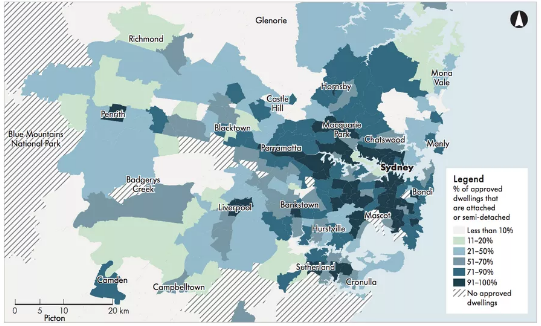Source: The Urban Developer
The roll out of infrastructure is not keeping up with the delivery of new housing in growth areas of Australia’s largest cities, warns the latest Infrastructure Australia report.
The Planning Liveable Cities report calls for a “place-based approach” that would enable governments to deliver more diverse housing, including at higher densities, in a way that supports the character and identity of each area.
Substantial planning, funding and policy reforms have been recommended to ensure governments are seamlessly coordinating the delivery of new housing in growing cities along with the infrastructure required, such as public transport, roads, hospitals and schools, to support it.
Infrastructure Australia executive director Peter Colacino says delays in the provision of infrastructure cost not only the economy but also the quality of life of those affected.
“If we don’t get the timing of new housing and infrastructure right, our growth centres risk being characterised by congested roads, overcrowded trains and buses, over-enrolment in schools, hospital bed shortages and constraints on community infrastructure,” he said.
“Around the country, governments are structured to deliver outcomes for sectors, such as transport, education, and health services, rather than outcomes for a ‘place’ and a community.
“This can lead to siloed planning and decision-making, which often leads to poor outcomes for communities.”
The Planning Institute of Australia welcomed the report, with president Steve O’Connor saying it’s vital to provide context around planning Australia’s growth and change.
“Infrastructure must serve to make places better and fulfil our plans for successful and sustainable cities and regions, and not just focus on benefit cost analysis.”
Population growth and development
It’s estimated Australia’s population is projected to increase by more than 10 million people between 2017 and 2047, with 80 per cent of this growth concentrated in Australia’s five largest cities of Sydney, Melbourne, Brisbane, Perth and Adelaide.
The report comes just in time for Prime Minister Scott Morrison’s meeting with state and territory leaders to discuss a national population policy, announced last month.
Colacino describes the nation’s current growth as changing at a rate “not seen in more than 50 years”.
“This brings economic, social and cultural opportunities for our cities, but if they are to remain great places to live, we need to balance growth in a way that works for the community.
“It is absolutely possible to grow our cities and maintain their character and world-class liveability, but we need to be smarter about how we plan for it.”
“As Australia’s population grows, it is crucial that we improve the way we plan for housing and infrastructure in our cities.
“Ensuring we have the right planning, funding and governance models in place will help the community see the value in increasing densities in appropriate areas and re-establish trust between communities and governments.
To manage projected population growth the report says governments will need to ensure the delivery of new housing coincides with upgrades to infrastructure, which ultimately requires a better collaboration across levels of government and a greater focus on strategic-level planning.
Affordable housing
“Too many communities have witnessed the delivery of poor quality housing development which is not well integrated into the local area and not accompanied by the infrastructure and services needed to support it,” Colacino said.
“As a result, communities are understandably apprehensiveabout further growth and change.”
Developer contributions
Governments and developers will always have different views on what a good developer contribution scheme entails.
However, the report states that more work needs to be done to reduce the complexity of these schemes to ensure it works in both infill and greenfield projects to deliver infrastructure when needed.
The approach
Planning Liveable Cities recommends a greater focus on strategic-level planning at a “place” level, including prioritising collaboration with the community to identify economic and social priorities that should not be compromised while catering for growth.
“We want communities to have a say about the kind of places they want to live in and their future infrastructure needs.
“This report makes a clear case for a place-based approach that will enable governments to deliver more diverse housing, including at higher densities, in a way that supports the character and identity of each area,” Colacino said.

